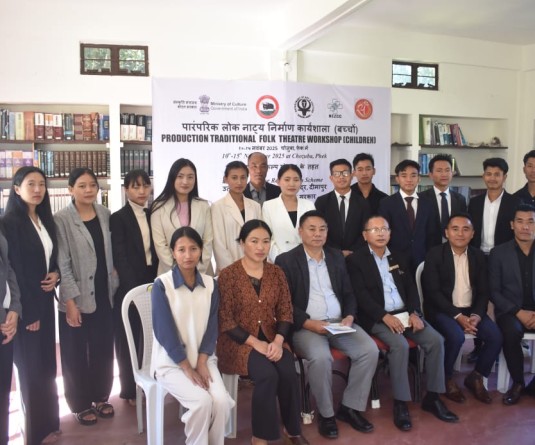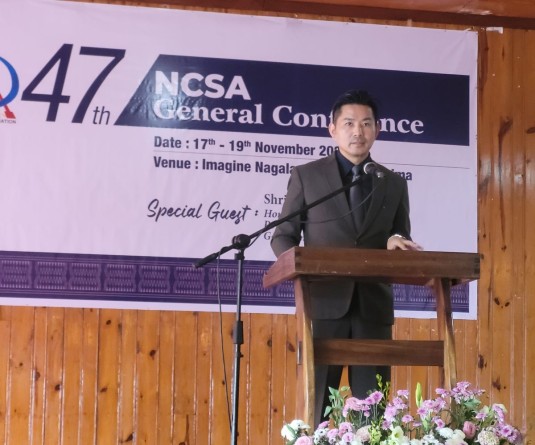
Part I – Diversity in the classroom
Lanusongla Lemtur (Special Educator)
John reads a short story and is unable to answer most of the questions following the reading exercise. But when John’s teacher reads the story out to him, John is able to answer almost all the questions. Mary listens to her teacher explain Newton’s 3 Laws of Motion but does not understand most of what the teacher is saying. That evening, Mary watches a show on Discovery Channel, which explains Newton’s 3 Laws of Motion through moving visual examples. Mary now understands her teacher’s lesson.
We are not all the same, and we do not all learn in the same way. A lecture in class or an article in the newspaper may be enough for some people to grasp new information, but those aren’t the most effective styles of learning for others. Learning styles simply mean the different ways of learning. Broadly, we can classify learning styles into three main categories –
1. Visual
2. Auditory
3. Kinaesthetic
Visual learners learn best through seeing, by visually processing the information that is presented to them – with diagrams, pictures, videos or even simple tools like graphic organisers and mind-maps. Auditory learners, on the other hand, optimise their learning ability when they process it through their ears, i.e., when they listen to a lecture or a story or hear it in songs. Lastly, kinaesthetic or tactile learners are best adapted to learning through movement, sense of touch and the use of their hands. The perfect way for them to learn and comprehend anything is by fiddling with things themselves, conducting experiments, exploring the world around them and maybe even acting things out with role-play.
Every person has a preferred or primary learning style, but usually a blend of two styles. It is based on the understanding that we all have different personalities with varying inclinations and interests. This is by no means an exact science, however, being aware of the fact that there are differences in the ways we learn is crucial to understanding the different learning needs within a student body. This helps in developing a system of education and teaching to provide all students with equal opportunities for learning.
Traditional teaching approaches have been limited to verbal lectures, dictation, and students copying notes from the board. Hence, traditionally, intelligence has been measured by IQ (intelligence quotient), which measures two things in an individual – verbal-linguistic intelligence and logical-mathematical intelligence.
However, not everyone is necessarily intelligent in these two areas.
What then is intelligence? Intelligence is a person’s ability to acquire knowledge (learn and understand), apply knowledge (solve problems by using the knowledge), and engage in abstract reasoning.
A critique of the traditional view of intelligence was put forward by Howard Gardner, Professor of Cognition and Education at Harvard University, in 1983, where he suggested that there are multiple intelligences within any given population, viz.:
a) Verbal-linguistic – word smart
b) Logical-mathematical – numbers and reasoning
c) Visual-spatial – pictures and spaces
d) Bodily-kinaesthetic – body and movement
e) Musical
f) Interpersonal – people smart,
g) Intrapersonal – self-smart
h) Naturalist – nature smart.
Diversity and teaching methods
The traditional method of teaching is optimised for those with primarily verbal-linguistic, logical-mathematical intelligence, and auditory learners, and to a small extent visual learners. The problem is that only 20-30% of any community are auditory learners, and not everyone is primarily verbally-linguistically and/or logically-mathematically intelligent.
The key question that needs to be addressed is -- What kind of education is the majority of the population receiving if the current education system is aimed only at 20-30%?
For example - What happens to students who learn something well by ‘seeing’ how it is done or by being shown what it is rather than by only reading short notes about it in their textbooks? These learners are neither being taught nor assessed in ways that are best suited to their individual learning styles. This denial of access to optimal learning opportunities reflects in their lack of being equipped enough to attain their true potential. It is no wonder, then, that so many students underperform in academics within the current traditional system of education.
The presence of diverse learning styles in any given student body and varying multiple intelligences in individuals together play an important role in determining how we learn and how well we learn. Hence, teaching methods in classrooms should incorporate various strategies to cater to the diversity in the student body.





